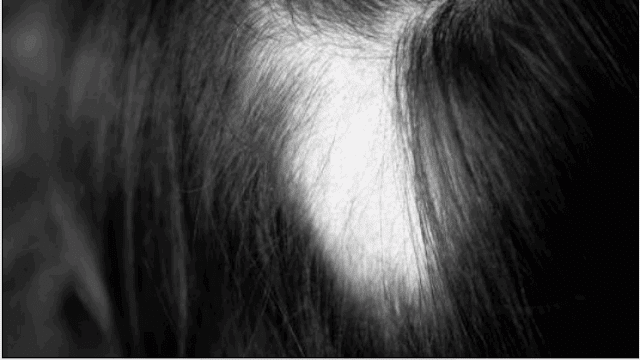Alopecia symptoms and the ways to treat alopecia
Anyone who notices that their hair has begun to fall out, is afraid, or who notices an oversized (anomalous) amount of hair on a comb or hairbrush, it's recommended that they're going to a dermatologist immediately.
Natural growth of hair
About 90% of hair grows all the time, and also the period required for hair growth may range from two to 6 years.
The remaining 10% of the hair, meanwhile, you rest for a period that will extend from two to a few months, so this hair falls out with the top of the remainder period. When hair falls out, new hair grows from hair follicles, starting a brand new growth cycle, from the start.
Head hair grows between 10 to fifteen millimeters each month. However, as an individual gets older, their hair growth begins to slow. Mostly, the phenomenon of hair loss may be a result of the natural hair growth cycle. Falling at a rate ranging between 50 to 100 hairs daily is taken into account as a really natural thing.
Causes and risk factors of alopecia
Hair loss at a high rate is often caused by an oversized number of reasons.
In some cases of hair loss, new hair grows in situ of the hair that fell out. In other cases, it's possible to treat the phenomenon of hair loss successfully by relating to a dermatologist.
As for the opposite cases, that no treatment is accessible until today, many continuous researches are being conducted regarding them, and it seems initially that it's possible to be optimistic about the long run and its bearing.
However, it's worth talking with a dermatologist about the simplest} and most effective hair loss treatment options for the attention condition.
The most important causes of hair loss are:
1- Using harmful chemical preparations
There are many ladies and men who use chemically formulated hair care products. Among these preparations:
- Hair dyes
- Colors and lighteners
- Hair straighteners
- Various materials used for curling.
2- Hair loss and hereditary baldness
This phenomenon is thought by its scientific name "Androgenetic alopecia / Calvities).
It is the foremost common explanation for hair loss, because it is transmitted genetically from the mother or the daddy. Women that suffer from this phenomenon usually have Very light and tiny hair, but they are not becoming completely bald.
This phenomenon may start to seem within the second, third, or fourth decade of life.
3- alopecia
It is not known what causes the phenomenon of partial hair loss, called "Alopecia Areata", but the prevailing belief is that it's associated with problems affecting the system (as the body produces antibodies for its own hair).
Alopecia treatment
Hair loss treatments differ, the foremost important of which are:
1- Hair restoration surgery
Doctors and surgeons specializing in dermatology perform several forms of surgeries geared toward restoring hair, restoring it and restoring the places from which it's fallen, additionally to giving the hair a natural look, the maximum amount possible.
As for the people that are possibly to undergo such surgeries, and also the most in need of them, they're people who have baldness that appear prominent, who have flash hair and whose hair falls out thanks to a scalp injury or as a results of their burns.
The type of operation that ought to be performed to revive hair is decided by the extent and shape of the baldness. A dermatologist can recommend one in all the kinds of surgery detailed below, so as to get the most effective possible result.
2- Hair Transplantation
Hair transplantation is predicated on the principle of "dominant donation" (preferred), that is, taking hair from a healthy place and transplanting it, during the surgery, so as for it to grow back within the bald area. Hair transplantation requires the following:
- Removing (removing) streaks from the scalp skin: which contains hair from the rear and sides of the scalp (these places are called "donation areas", since they contain hair that continues to grow for life).
- Repairing and restoring the "donation area": a process that sometimes leads to the looks of a little scar, covered by the encircling hair.
- Cut the sutures from the scalp skin: containing the hair, from the donation area, and divide them into groups of implants so as to implant them within the bald patches prepared for this.
The area that may be covered by hair transplantation varies in keeping with the scale of the bald spot and also the method used.

